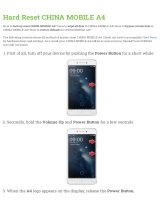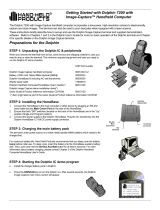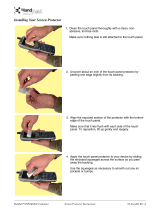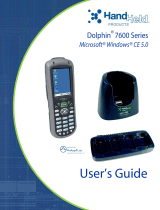
iv
Function Key Combinations................................................................................................. 4-3
CTRL Key Combinations ..................................................................................................... 4-4
Program Buttons.................................................................................................................. 4-5
Chapter 5 - Using the Image Engine
Overview.............................................................................................................................. 5-1
Available Image Engines ..................................................................................................... 5-1
Depth of Field ................................................................................................................ 5-1
Supported Bar Code Symbologies ..................................................................................... 5-2
Activating the Engine...........................................................................................................5-3
Decoding ............................................................................................................................. 5-3
Capturing Images (5300 Engine only) ................................................................................. 5-4
Chapter 6 - Using the Laser Engine
Overview.............................................................................................................................. 6-1
Available Image Engines ..................................................................................................... 6-1
Depth of Field - IS4813.................................................................................................. 6-1
Supported Bar Code Symbologies ..................................................................................... 6-1
Activating the Engine...........................................................................................................6-2
Decoding a Bar Code .......................................................................................................... 6-2
Chapter 7 - System Settings
Overview.............................................................................................................................. 7-1
Clock & Alarms .................................................................................................................... 7-2
Personal Menu .................................................................................................................... 7-3
Buttons........................................................................................................................... 7-3
System Menu....................................................................................................................... 7-7
About ............................................................................................................................. 7-8
Backlight ........................................................................................................................ 7-8
Certificates..................................................................................................................... 7-9
Customer Feedback ...................................................................................................... 7-9
Encryption.................................................................................................................... 7-10
Error Reporting ............................................................................................................ 7-10
External GPS............................................................................................................... 7-10
Managed Programs ..................................................................................................... 7-11
Memory........................................................................................................................ 7-11
Power...........................................................................................................................7-12
Regional Settings......................................................................................................... 7-13
Remove Programs....................................................................................................... 7-14
Screen ............................................................................................................................... 7-15
Task Manager....................................................................................................................7-16
Chapter 8 - Communication
Connecting the Dolphin 6500-USB Communication Cable ................................................. 8-1
Charging Terminal with USB Cable..................................................................................... 8-1
Connections Menu............................................................................................................... 8-3























